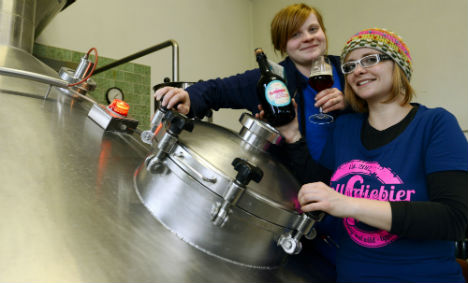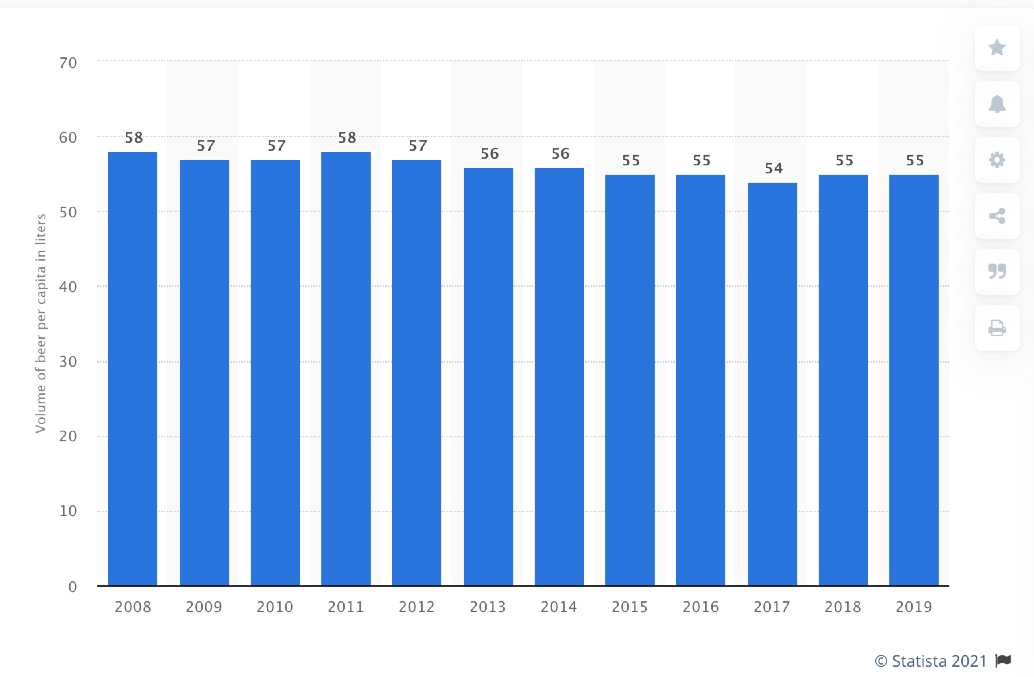In a microbrewery in a trendy Berlin neighbourhood, Thorsten Schoppe, one of a wave of beer-makers using new German ingredients to create non-traditional brews, pours hop pellets into a copper vat.
"We only use four ingredients, and that's one of them," said Schoppe, as the faintly sour scent of beer begins to emanate from the boiling water and malt, "so they're important".
German small-batch brewers like Schoppe have increasingly used so-called "flavour hops" to impart notes of orange, grapefruit or peach while still following the country's cherished 16th century purity law, which restricts other flavourings.
Until recently, Schoppe had to import special hops from the US, where craft brews have an established niche in the market.
This year, German growers, moving to capitalise on growing demand, harvested the country's first commercial-sized batch of newly developed flavour hop varieties.
"It really amazes people what kind of special flavours you can bring to a beer even within the Reinheitsgebot," the purity law, said Schoppe, who brews a double India pale ale with a citrus aroma under his Schoppe Braeu label.
"Some people don't believe you if you say this is all natural, they think you must have added some flavours," said Schoppe.
Sebastian Hiersick, 35, a cook in Berlin, is a whisky drinker who generally doesn't like "normal German beer".
"It's either too hoppy, too malty, or too carbonated," Hiersick said.
After starting to work at a restaurant that sells German craft beers, he developed a taste for those with fruity undertones.
"When it's hot out, or in the summer, they are really nice to drink. They are very drinkable, it's like juice or lemonade," Hiersick said.
Colleague Magdalen Reskin, 29, who likes chocolate bock, a dark brew, agrees.
"I like them because they don't taste like beer," she said.
Hops, fresh or dried and processed into pellets, traditionally gave beer its bitter taste.
Hop breeder Anton Lutz began developing the new German varieties in 2006, when he stopped throwing out seedlings with "fruity" aromas and started breeding them on purpose.
Working out of the Hop Research Centre in Huell, a tiny village 60 kilometres (40 miles) north of Munich, Lutz pollinated female flowers from a popular US hop variety, called Cascade, with pollen from male plants from traditional German hops.
The idea, said Lutz, was to combine citrusy North American hop flavours with traditional local hops to create a flavour that is "hoppy and fruity, not only fruity".
"German beer drinkers expect beers that are not so extreme, so we needed something a little bit softer," Lutz said.
The four new breeds, including one called "Mandarina Bavaria", are described as having notes of "distinct honeydew melon" and "strong tangerine and citrus".
Local growers are starting cautiously: by the end of 2013, 150 hectares, less than one percent of Germany's hop fields, will be planted with the new varieties.
"We don't want the whole beer-drinking culture in Germany to change," Lutz said.
"We want to open up beer to new markets, not convince people to change their tastes."
Germany's beer purity law, introduced in Bavaria in 1516 and adopted nationwide in 1906, dictates that only water, malt, hops and yeast, and no flavourings or preservatives, may be used to make beer.
The law has contributed to a beer culture more heavily focused on tradition and quality than innovation, and the new hop varieties were initially met with scepticism.
"The classic German beer drinker was almost alarmed, they said 'We don't want juice, we want beer'," said Elisabeth Seigner, head of hop breeding research at the Bavarian State Research Centre for Agriculture.
Now, demand for the new hops exceeds supply, Seigner said.
With a local version of flavour hops available, larger, more traditional breweries are beginning to try them.
Meinel Brewery, in the small Bavarian town of Hof, has been family-owned since its founding in 1731.
About half of the beer brewed there is still Pilsner.
In 2010, however, brew-master Gisela Meinel-Hansen and three local women brewers started making two limited-edition seasonal versions of "Holladiebierfee", sold in champagne bottles.
"We have a goal, we want to bring women to beer. This beer is our ambassador," Meinel-Hansen said.
This winter's nut-brown chocolate porter, with flavours of coffee and red berry, uses the new "Mandarina Bavaria".
Even traditional Hofbraeu, whose Munich beer hall is a tourist favourite, now brews a beer with German flavour hops.
As beer consumption declines, the new varieties allow German hop growers to capitalise on brewers' experimentation.
"Three, four, five years ago it was a completely different opinion from brewer to brewer," said Lutz.
"Now, I think all brewers and hop growers think we need all the varieties."




 Please whitelist us to continue reading.
Please whitelist us to continue reading.
Member comments